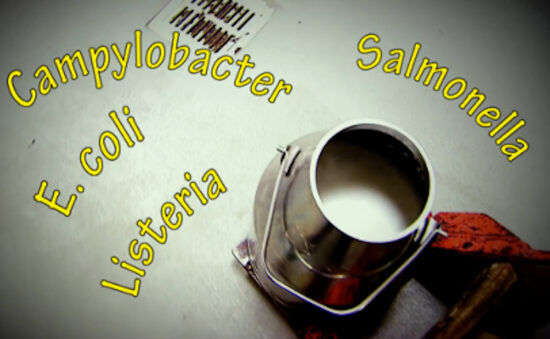The Illinois Department of Public Health is investigating an outbreak of Campylobacter infections linked to unpasteurized, raw milk.
The department has not named a specific dairy but has issued a general warning about the dangers of raw milk. The department said the implicated raw milk is from a common source and that the producer is taking steps to notify customers and is cooperating with the investigation.
So far at least 11 people have been infected.
“Pasteurization is one of the greatest public health successes of the last century,” said public health director Dr. Sameer Vohra. “It helps keep milk and dairy products safe for everyone to enjoy.
“Raw milk skips this important step and can carry dangerous germs that may cause serious illness, especially in young children, older people, and individuals with chronic medical conditions. To help keep everyone in Illinois safe, we encourage people to be cautious and think carefully before choosing to drink raw milk.”
Most milk products sold in Illinois are pasteurized, meaning they have been treated with heat to kill viruses, germs, and other substances that can cause illness. Raw milk, sometimes referred to as fresh milk, is milk that has not been pasteurized, making it more likely to be a source of foodborne illness.
Illinois raw milk rules require testing for temperature, antibiotics, and certain signs that could indicate infection within the product. However, specific pathogen testing for germs like Campylobacter or other disease-causing agents like E. coli or Salmonella is not required.
About campylobacter infections
Food and beverages contaminated with Campylobacter do not look of smell bad.
According to the U.S. Centers for Disease Control and Prevention outbreaks have been associated with unpasteurized dairy products.
Many people recover in a week, but Campylobacter infection can result in long-term consequences, such as arthritis, irritable bowel syndrome (IBS), and Guillain-Barré syndrome (GBS).
Azithromycin and fluoroquinolones such as ciprofloxacin are commonly used for treatment, but resistance to fluoroquinolones is common.
Campylobacter infection symptoms usually begin two to five days after exposure and are characterized by diarrhea (frequently bloody), abdominal pain, fever, nausea, and sometimes vomiting. More severe illness can occur, including bloodstream infection and symptoms mimicking acute appendicitis or ulcerative colitis.
(To sign up for a free subscription to Food Safety News, click here)



